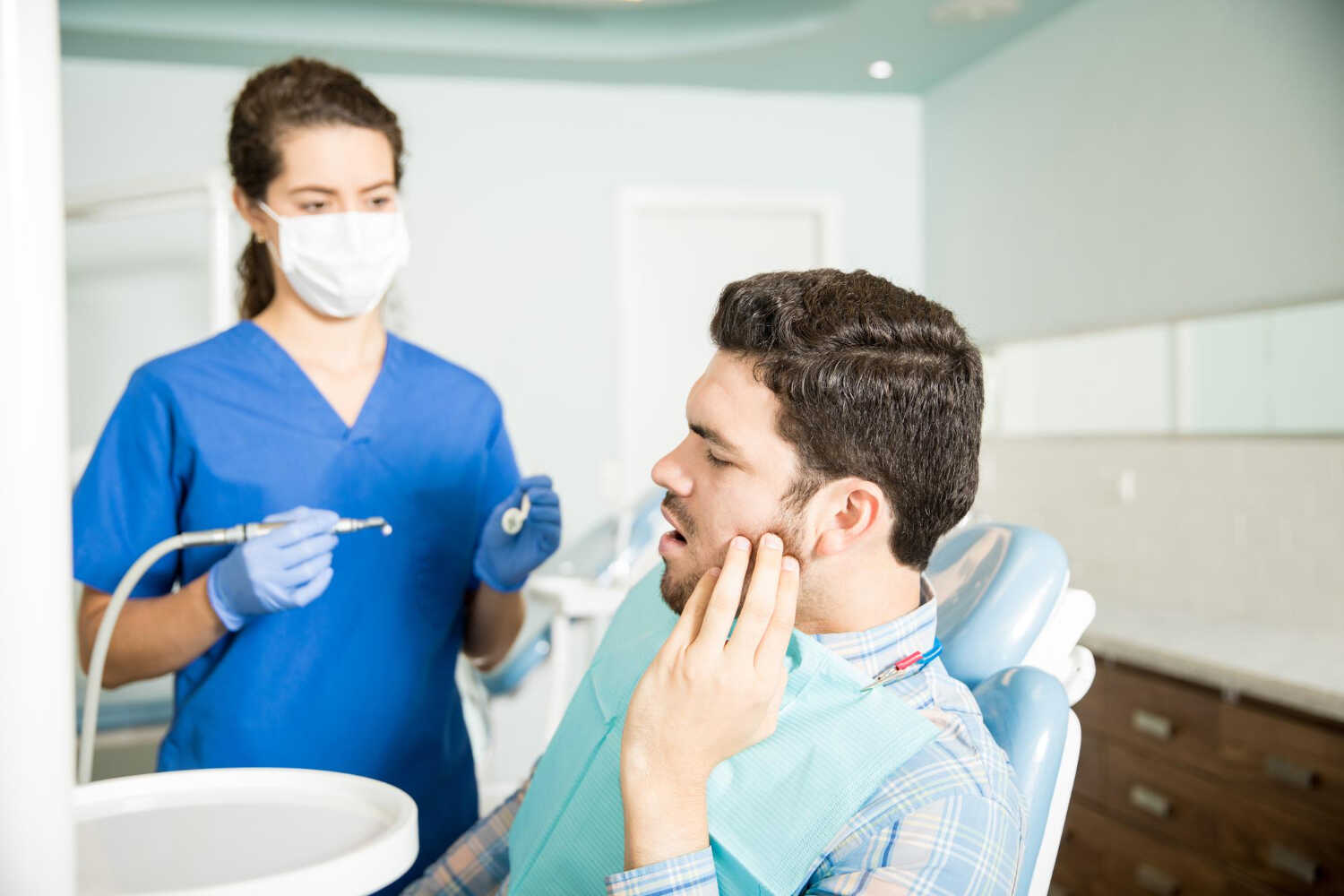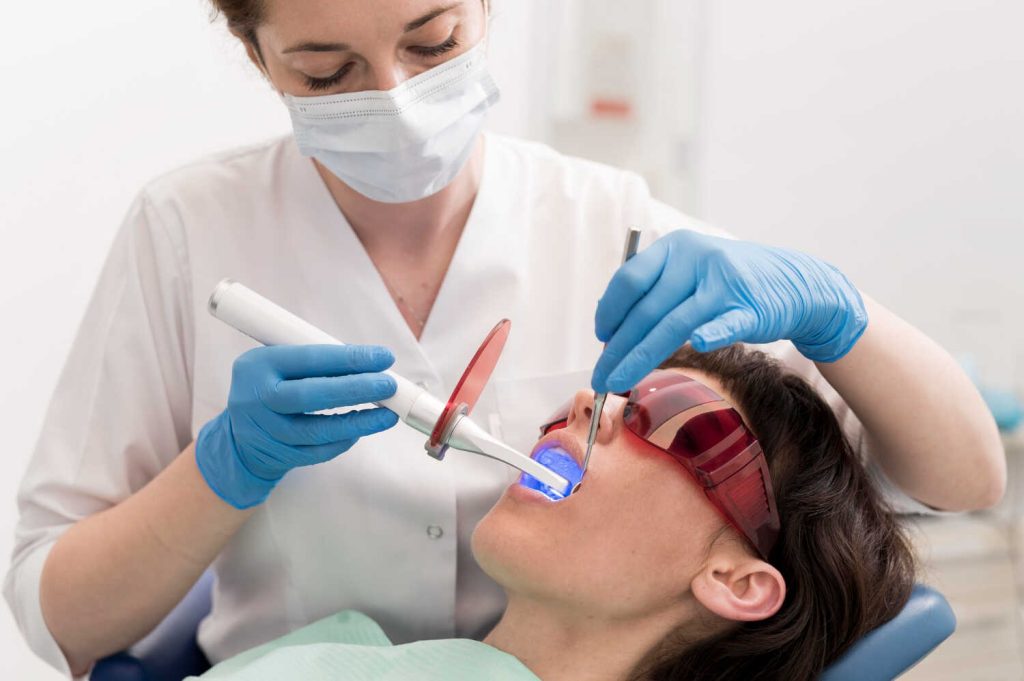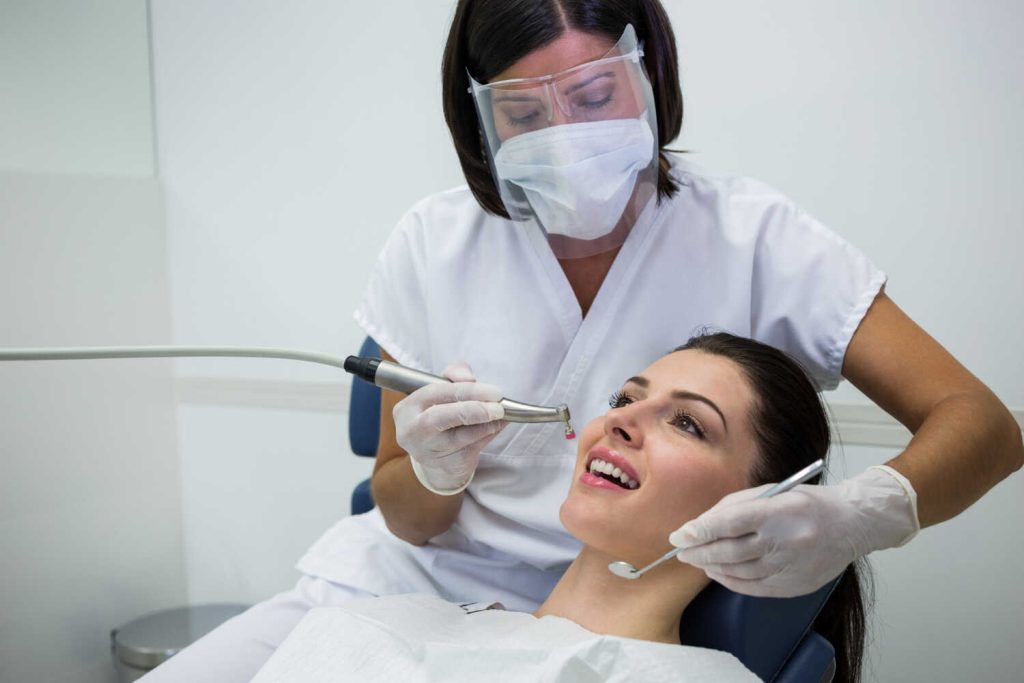Introduction
Tooth extraction is a standard procedure your dentist may recommend for badly damaged, infected, or crowded teeth. After removing one or more teeth, the empty socket leaves a noticeable gap, affecting your smile’s appearance. You may contemplate teeth whitening to make surrounding teeth brighter and shift focus away from the extraction site. However, is it safe to undergo whitening procedures immediately after having a tooth pulled? This blog will examine the tooth extraction healing timeline and when whitening after extractions is advisable. Whitening too soon could irritate healing sites or cause complications. We’ll provide tips on safely whitening post-extraction once your mouth has recovered. Proper timing and precautions can enhance your smile after losing a tooth.
The Tooth Extraction Healing Process
When dentists extract a damaged or problematic tooth, they heal the surgical site before considering cosmetic treatments like whitening nearby teeth. Here’s the general tooth extraction healing timeline:
- Days 1-3: Bleeding stops, pain and swelling peaks.
- Week 1: Blood clot forms over a socket, and pain decreases.
- Weeks 2-4: The socket starts to fill with new tissue.
- Weeks 4-6: Soft tissue fills the socket.
- Months 3-6: Bone regeneration completes at the extraction site.
With careful post-op oral hygiene and eating soft foods, sockets typically heal in 6-8 weeks. However, whitening too soon can disrupt the healing of blood clots and new tender tissues.
Can I Whiten My Teeth Right After an Extraction?
It’s best to wait until your extraction site has healed before undergoing teeth whitening procedures. Here’s why:
- Bleaching chemicals irritate the raw nerve endings in open sockets, causing severe pain.
- Exposed bone tissue without overlying gum tissue is vulnerable to chemical burns from peroxides.
- New blood clots can become dislodged, causing dry socket complications.
- Active gum inflammation around the site makes tissues more prone to irritation.
- Whitening trays or strips may disturb or get stuck in the healing socket.
Whitening immediately after extractions almost always results in significant discomfort and may negatively impact the normal healing process. Have patience and wait at least one to two months.
Factors that Determine When You Can Whiten Post-Extraction
Several factors affect the ideal timing to undergo teeth whitening after extractions:
- Number and location of extracted teeth – Large molars take longer to fill with new bone and gum tissue than incisors. Healing multiple sites at once delays whitening.
- Difficulty of the extraction – Traumatic extractions with excessive bone removal or tooth sectioning require more healing time before whitening than a simple extraction.
- Presence of infection before or after – Active infections lengthen the healing stage before it’s safe to whiten.
- Current health conditions – Diseases like diabetes slow healing and call for more time before whitening.
- Medications – Chemotherapy, steroids, or other drugs that impair healing necessitate longer whitening delays.
- Smoking – Tobacco negatively impacts healing and requires waiting longer before whitening, up to 5-6 months.
Discuss your unique situation with your dentist to determine the ideal whitening timeframe after extraction surgery based on your healing ability.
Whitening Tips After Healing Extraction Sites
Once you’ve allowed adequate time for extraction sockets to close and fill in with new tissue completely, you can undergo teeth whitening more safely by:
- Opt for custom-fitted whitening trays from your dentist to avoid irritating sites.
- Using lower concentration whitening gels instead of intense power bleaching.
- Applying petroleum jelly or desensitizing balm to protect tender areas around extraction sites.
- Rinsing with salt water before applying trays to keep sites clean.
- Avoiding whitening strips that wrap over and stick to healing gums.
- Easing into whitening gradually instead of extended sessions initially.
- Maintaining excellent oral hygiene to prevent inflammation around healing sites.
- Consult your dentist about options if whitening causes any sensitivity or pain at extraction areas.
You can gradually brighten your smile after recovering from tooth extractions with some care and precaution. But it’s crucial to allow adequate healing time first.
Improving Smile Appearance After Losing Teeth
Aside from whitening remaining teeth, you can further improve the look of your smile after extractions through:
- Replacement with dental implants to fill edentulous spaces.
- Orthodontic treatment to close gaps by shifting adjacent teeth.
- Dental bridges to fill spaces and prevent teeth shifting.
- Partial dentures that can be temporarily or permanently tooth-supported.
Discuss restorative solutions with your dentist to determine the optimal methods for replacing and stabilizing your smile after tooth loss.
Conclusion
Allowing at least 6-8 weeks for complete healing after tooth extraction ensures your mouth recovers properly before teeth whitening treatments. While patience is required, you can regain a vibrant, confident smile through professional whitening and restorative options once healing is complete. Contact our office to determine the appropriate timing and procedures for improving the appearance of your smile after extractions.





